Crispy and golden brown on the outside, with a creamy middle and impossibly delicious, this easy farinata recipe (also known as torta de ceci, cecina, faina, socca or panisse) is crazy easy to prepare! Ready in an hour, it makes the perfect appetizer, snack or side dish. Naturally gluten-free, dairy-free, and vegan too, so everyone can indulge and enjoy!
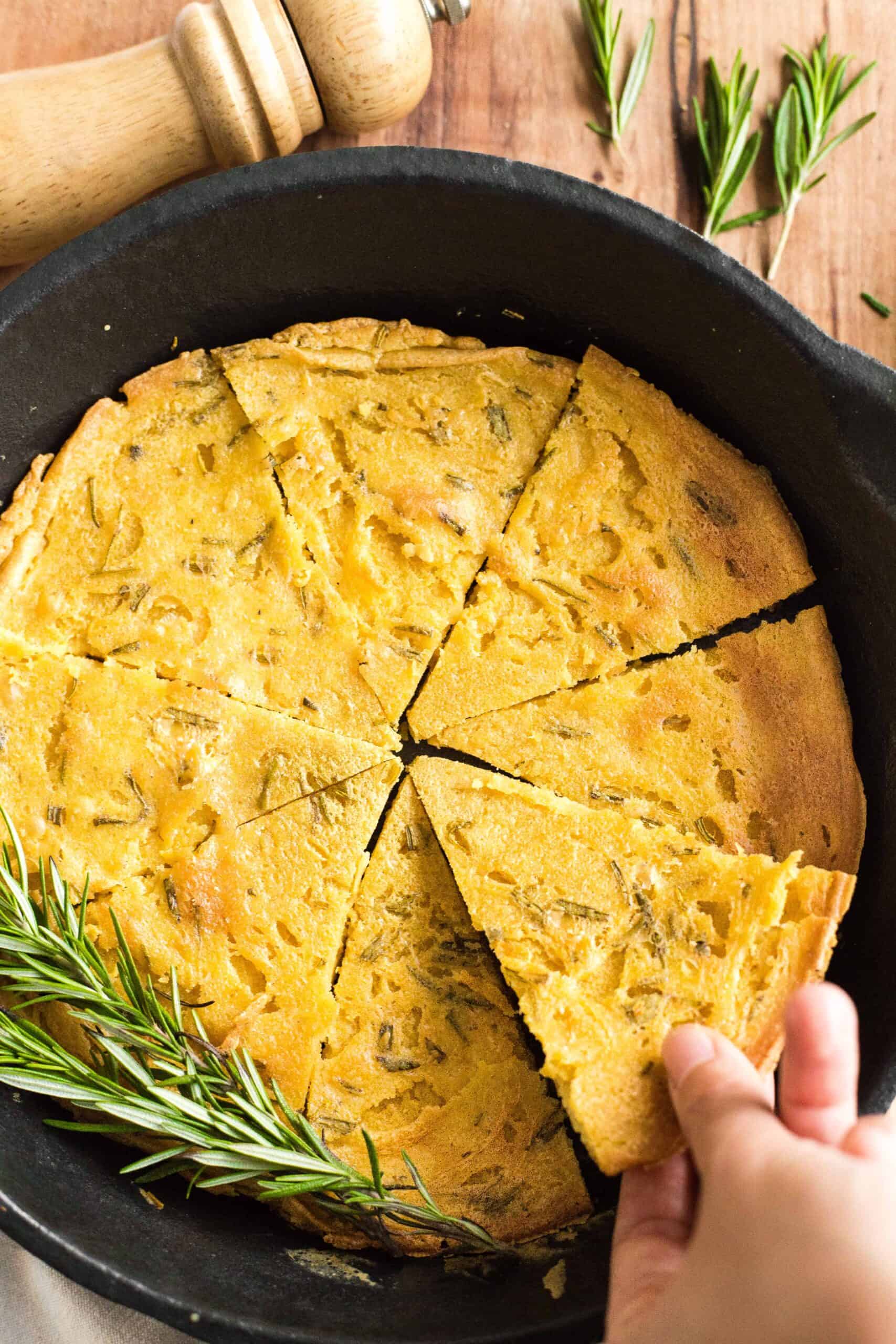
Want to save this recipe?
Enter your email & I’ll send it to your inbox. Plus, get great new recipes from me every week!
Jump to:
- My Love for Italy and Italian Food
- What is Farinata?
- Other Versions of Chickpea Flatbread
- How to Eat Farinata
- Why This Recipe Works:
- Ingredients You’ll Need:
- Ingredient Notes/Substitutions:
- How to Make Farinata (Step by Step):
- Dish by Dish Tips/Tricks:
- Recipe FAQs:
- Other Italian Recipes You’ll Enjoy:
- Chickpea Recipes You’ll Love:
- Appetizer Recipes to Indulge In:
- Easy Farinata Recipe – Chickpea Flatbread (Gluten-Free, Vegan)
My Love for Italy and Italian Food
I have an unending love affair with Italy, ever since I first travelled there with friends in 2008, and later, when Juan and I returned to the boot-shaped country to explore the Eternal City of Rome and do a road trip along the Amalfi Coast in 2014.
But you know what really hypes me up, apart from Italy’s natural beauty? I’m so taken away by the fact that in this incredible country, food has its own pedastal in Italian culture.
And yes, while pizza and pasta are the international icons of Italian cuisine, there are plenty of other foods which are deeply rooted in the country’s culture – things that are less well-known amongst foreignors but no way less worthy.
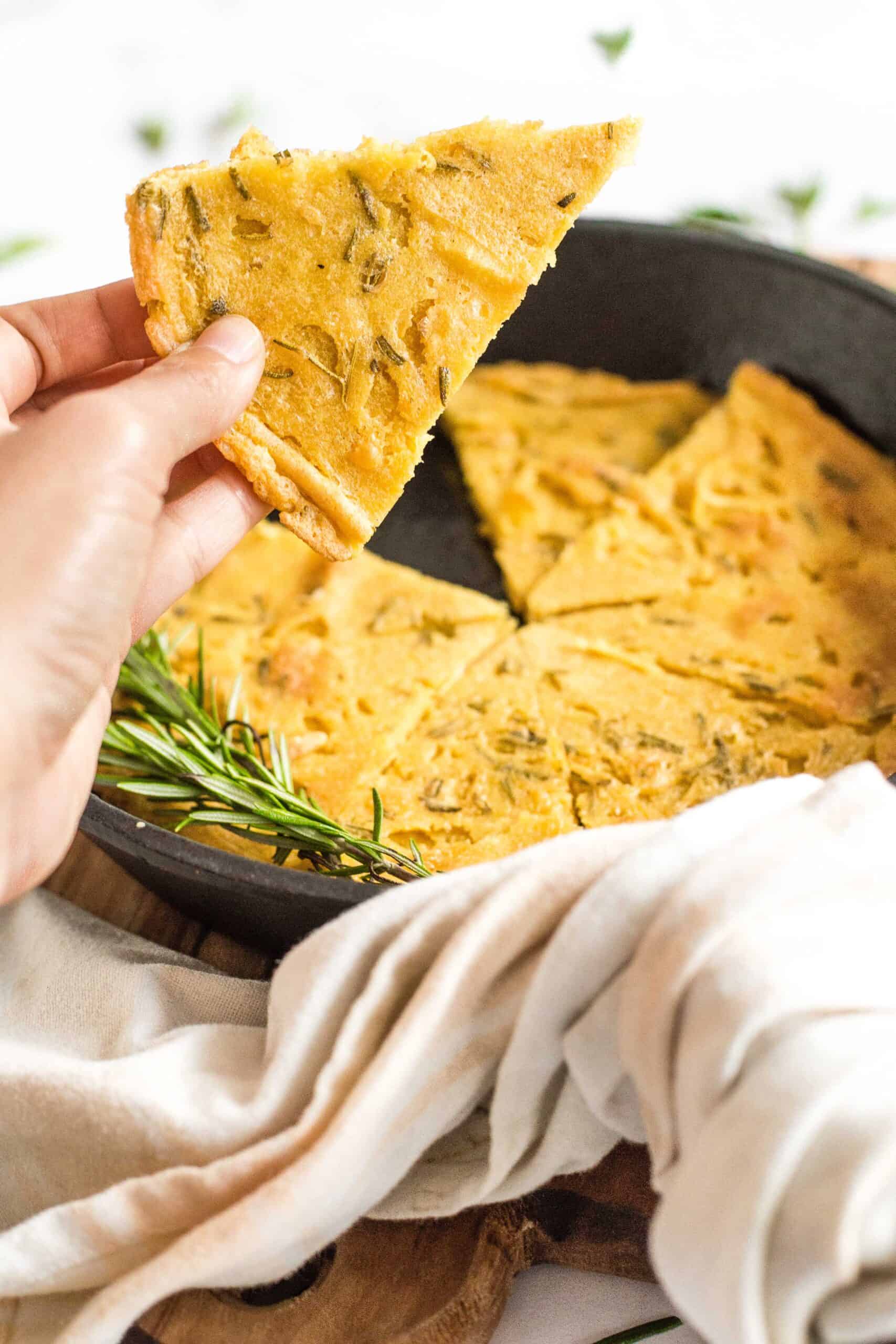
What is Farinata?
I first got to know about farinata from Rachel’s blog, after going through her delicious archives while preparing for our trip to Italy in 2014.
Today I’m bringing you an easy farinata recipe, which is basically chickpea flatbread that has its humble beginnings in Genoa, but then later became a popular street food along the south Tuscan coast, particularly in Liguria.
As with many foods, farinata, which is also known as “torta de ceci” or “cecina“, was first created as food for the poor. Made with just chickpea flour, water, olive oil, salt and pepper, its affordable ingredients made it an extremely accessible snack for the lower social classes.
Because chickpea flour has a very distinct and particular smell and taste (of chickpeas naturally), it may affect how much you like farinata. The taste may be a bit too strong for some palettes. But if you like hummus, which is made of pureed chickpeas, I’m betting you’ll also like farinata.
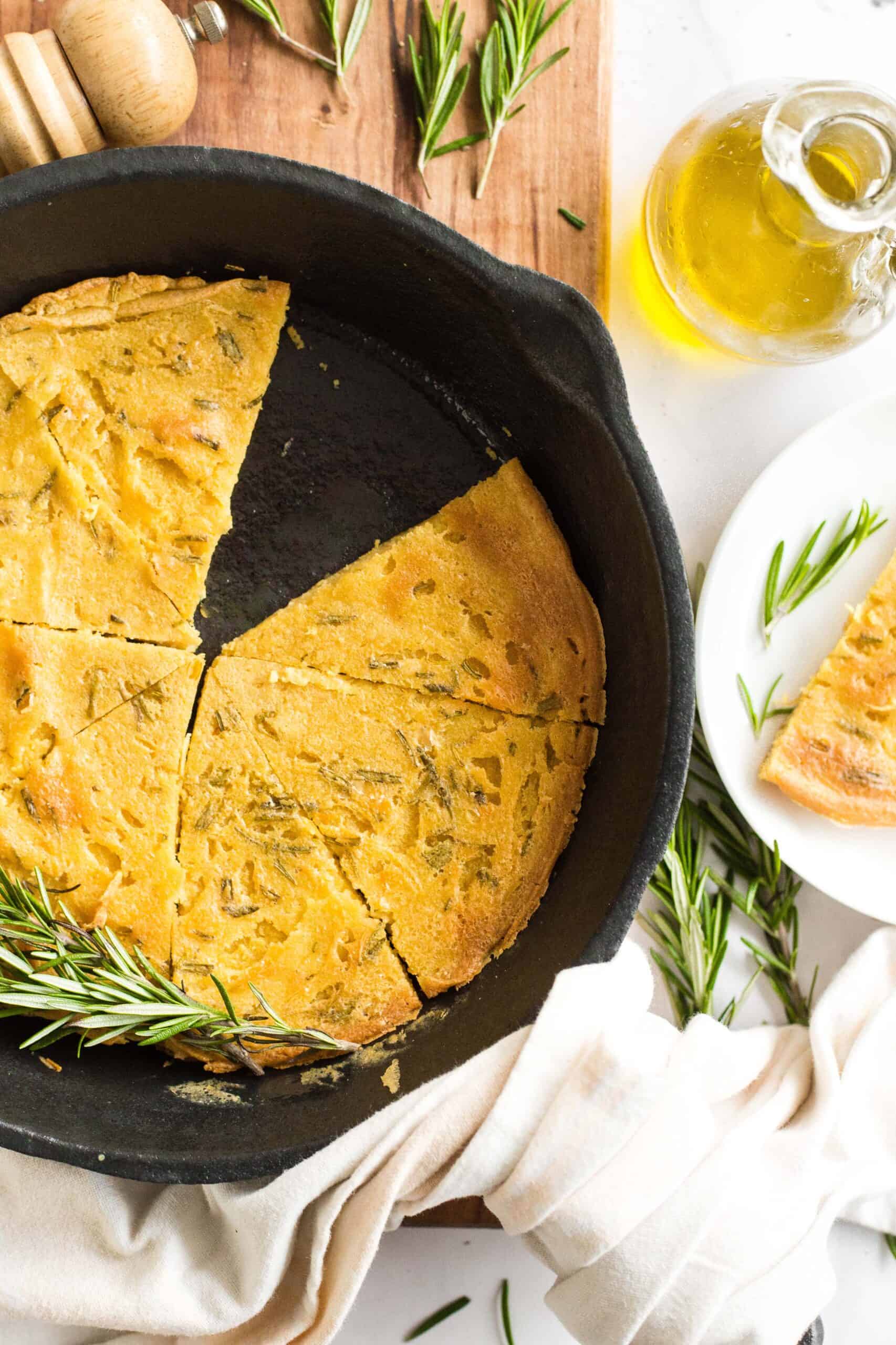
Other Versions of Chickpea Flatbread
It seems that the idea of chickpea flour flatbread is not uncommon, and similar versions (usually with the same ingredients) can be found all over the world.
The French versions include the more commonly known “socca” (popular in Southeastern France) or “panisse” (a specialty of Marseille).
In Argentina, it is known as “faina”, and is often served and eaten together with pizza.
How to Eat Farinata
Farinata is very filling, and can be eaten both alone as an appetizer or as a full meal, accompanied with roasted veggies or other ingredients of your choice.
I personally enjoy this chickpea farinata best as an appetizer sprinkled with freshly ground black pepper and an extra shake of salt.
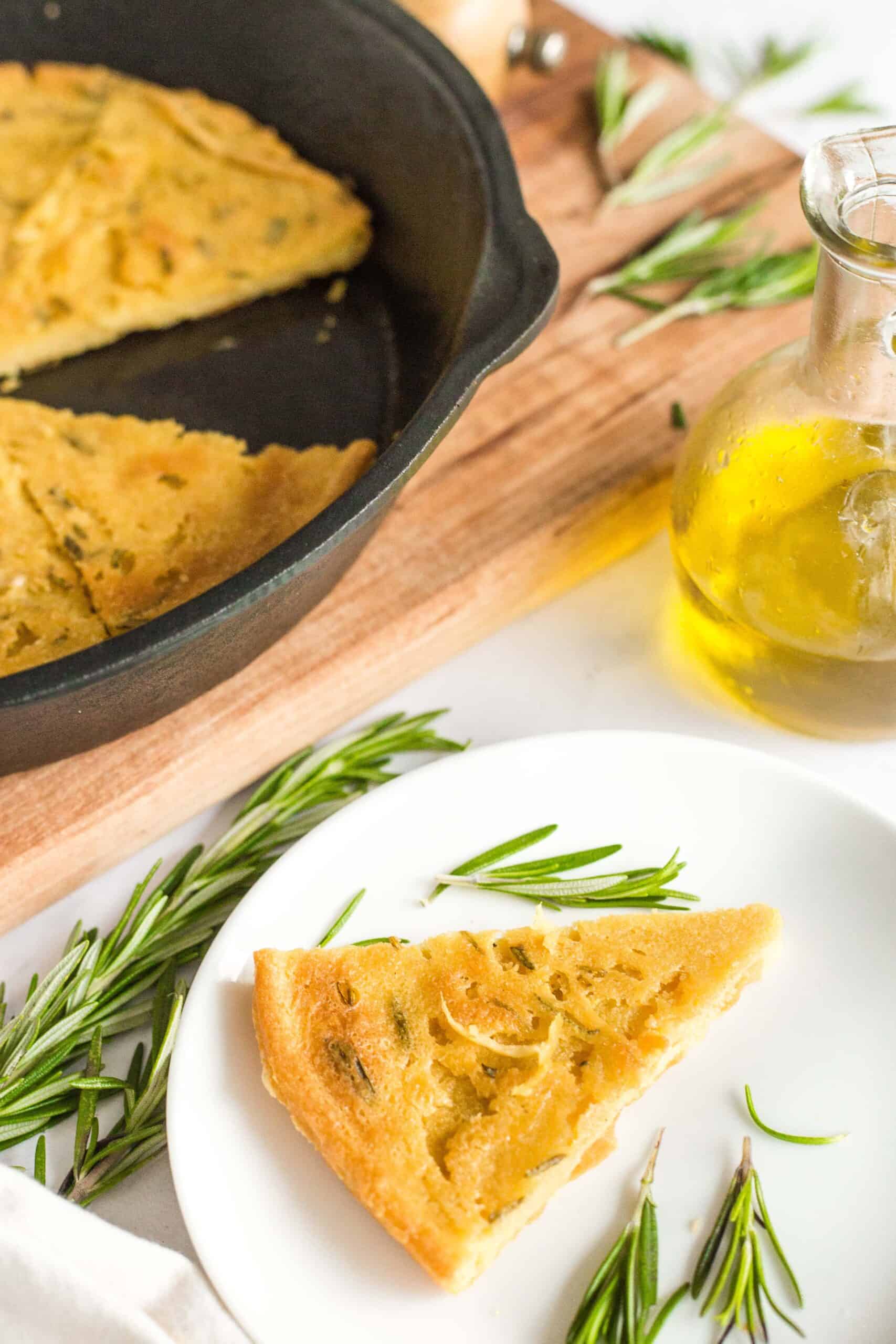
Why This Recipe Works:
With just a handful of ingredients required, this super simple recipe comes together very easily in an hour and always makes an amazing appetizer, snack or side dish!
Crispy and crusty on the outside, with a creamy middle, this is absolutely delicious and you’re certainly going to love it!
Naturally gluten-free, dairy-free and vegan, even Celiacs or those with gluten intolerances or lactose intolerances can enjoy it!
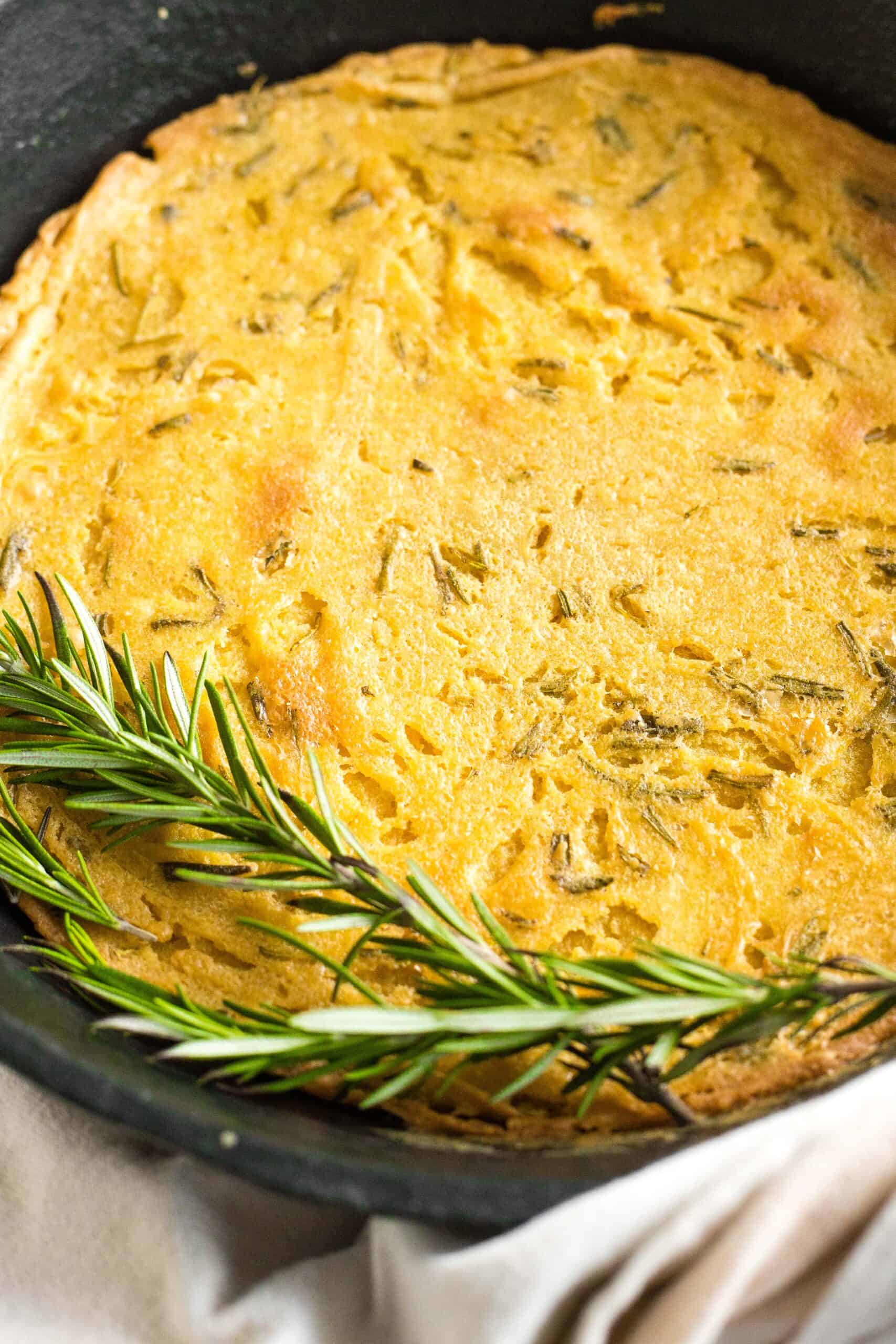
Ingredients You’ll Need:
Here’s a visual overview of the ingredients you’ll need to make this easy farinata recipe. For exact quantities, please refer to the recipe card at the bottom of this post.
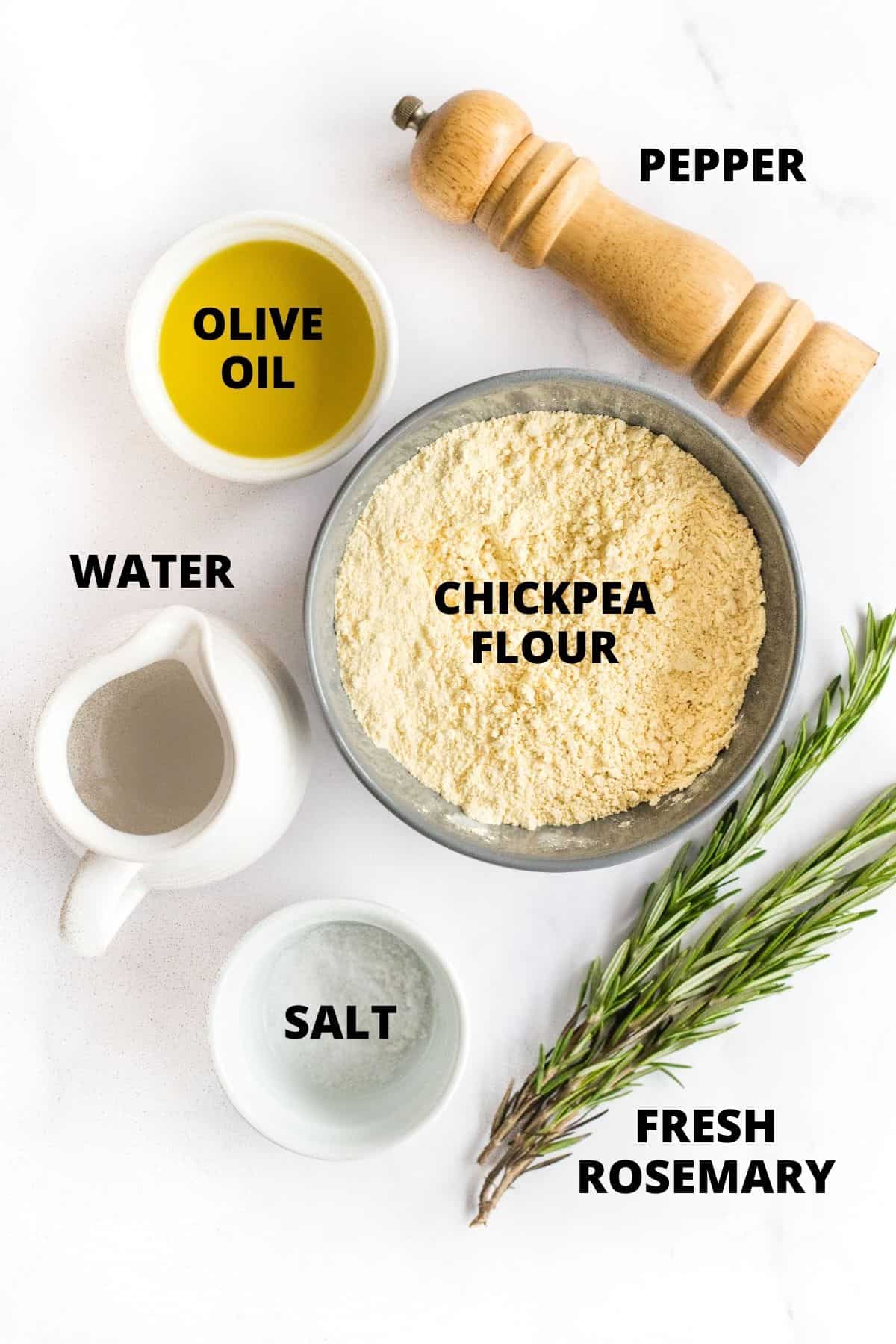
Ingredient Notes/Substitutions:
- Chickpea Flour: Since this is a chickpea flatbread recipe, chickpea flour is the main ingredient, and I do NOT recommend replacing it with other flours.
- Warm Water: Make sure to use warm water so the chickpea flour dissolves well.
- Rosemary: I like adding fresh rosemary for adding flavor. If you only have dried rosemary, use 1/2 teaspoon dried rosemary as dried herbs tend to be stronger in taste than fresh herbs. Alternatively, if you don’t like the taste of rosemary, feel free to leave it out instead.
- Olive Oil: In my opinion, the flavor that extra virgin olive oil imparts to this flatbread is the best. However, if you don’t have olive oil on hand, you may replace olive oil with other high-smoke point oils such as avocado oil.
- Pepper: I like the heat that a sprinkle of freshly ground pepper adds to the chickpea flatbread. However, you may leave it out if you prefer.
- Cast Iron Skillet: I highly recommending using a cast iron skillet to ensure that both the bottom and the top crisp up as the farinata cooks in the oven. If you don’t have a cast iron skillet, you may also use a rimmed baking sheet instead.
How to Make Farinata (Step by Step):
1. Mix Flour, Salt and Water
Whisk chickpea flour, salt, and warm water together in a large bowl to get a pale yellow batter. Cover the bowl with plastic wrap or a plate and let the batter stand for 30 minutes.
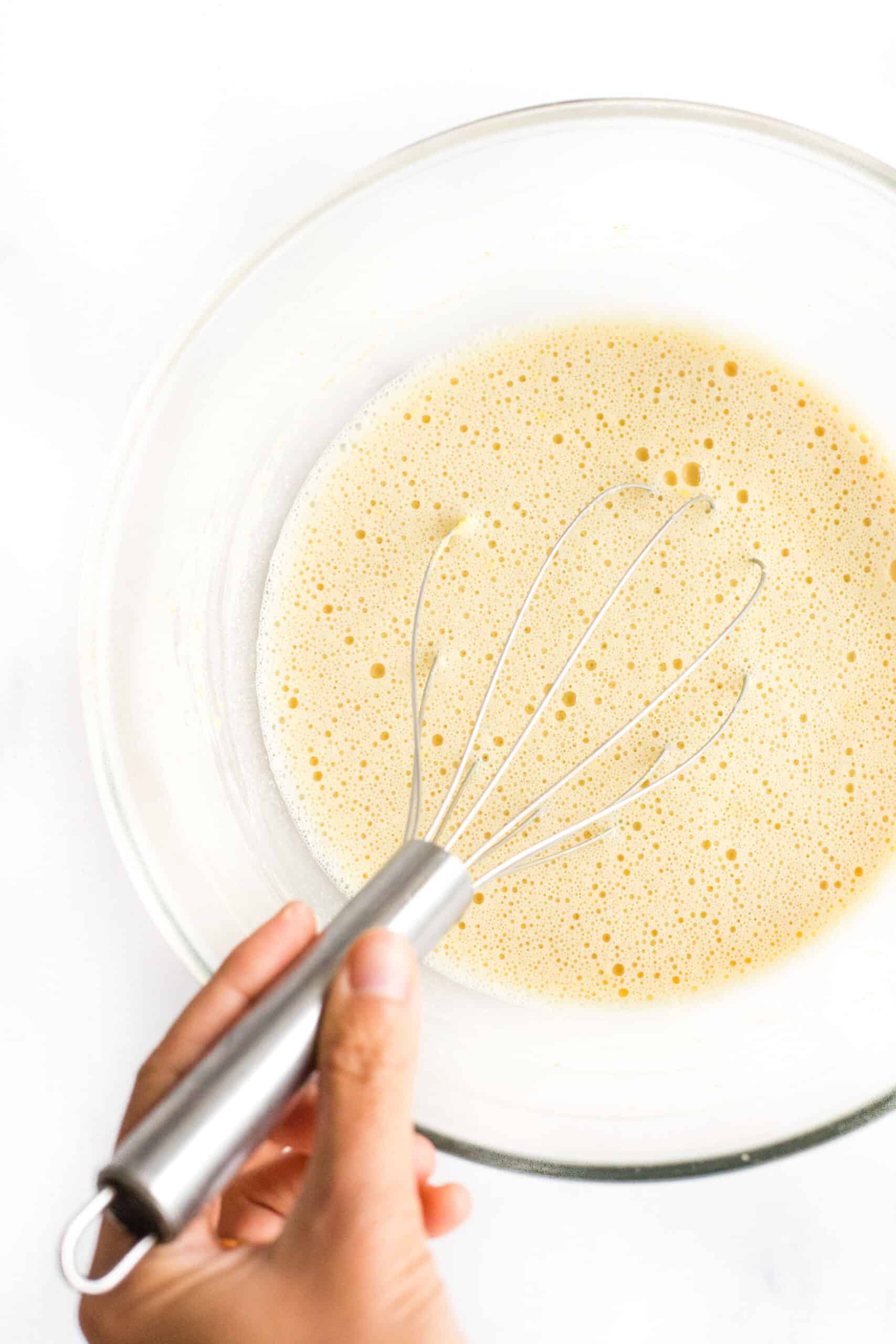
2. Remove Foam
Use a spoon to remove as much foam as possible from the batter.
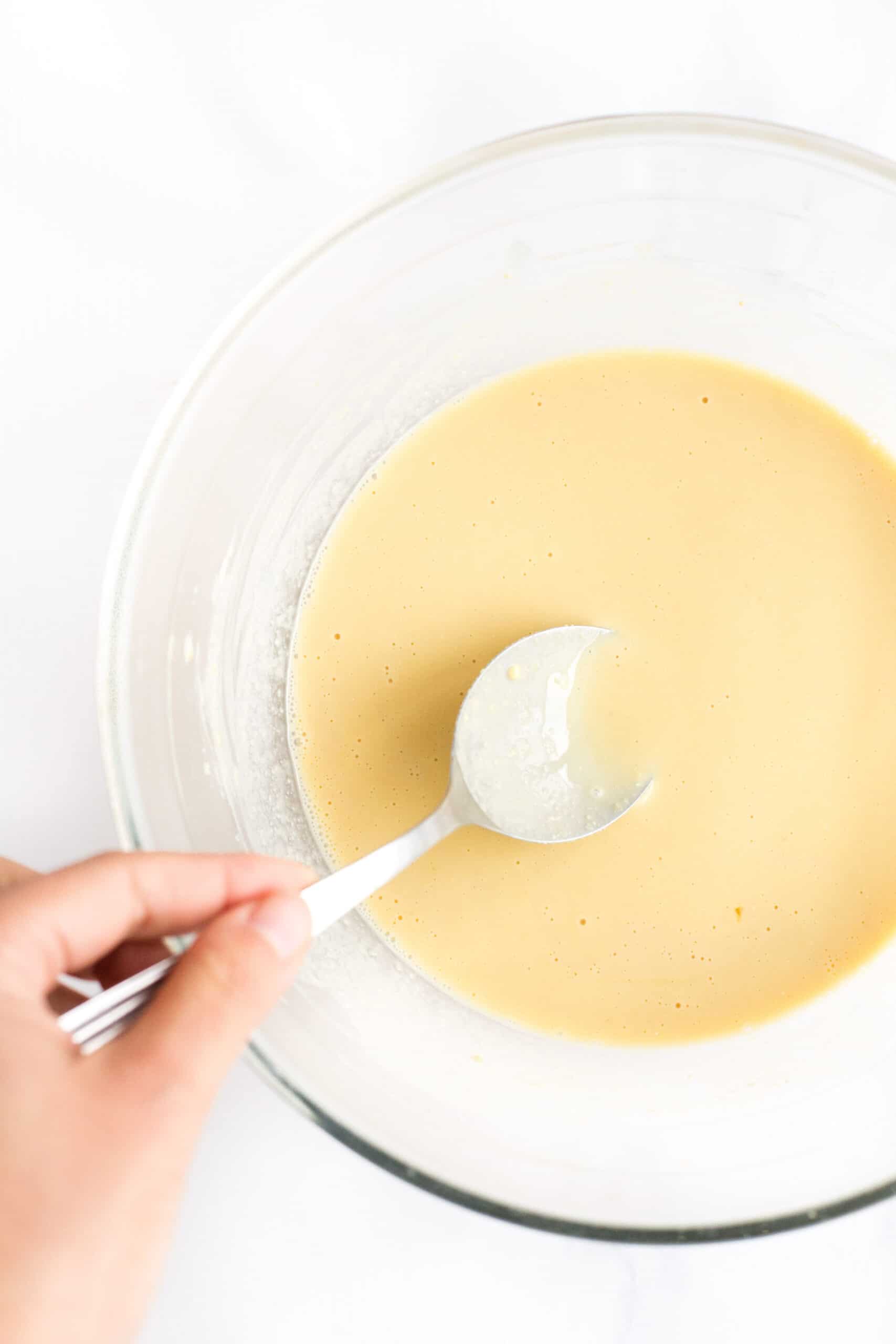
3. Add Oil and Rosemary
Once batter is done standing, whisk in 2 tablespoons of the olive oil and rosemary to get a liquid yellow mixture.
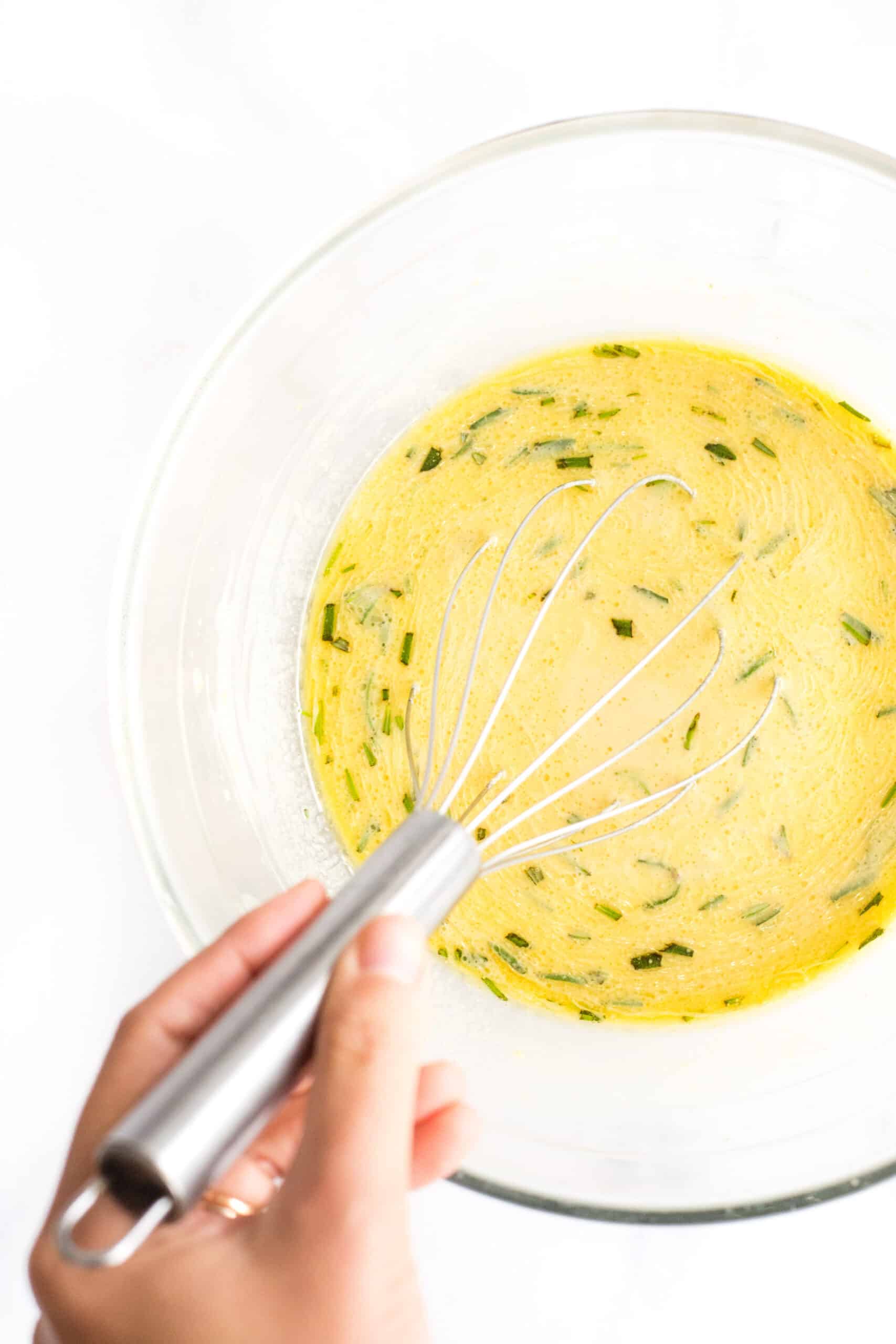
4. Preheat Oven
While the batter is standing, preheat the oven to 500F and place a standard 10-inch cast iron skillet in the oven to heat it up until smoking hot.
5. Heat Oil in Skillet
Pour the remaining 3 tablespoons of olive oil into the hot cast iron skillet and swirl the skillet to ensure oil coats the entire surface. Return the skillet with the oil to the oven until oil is hot and starts to shimmer.
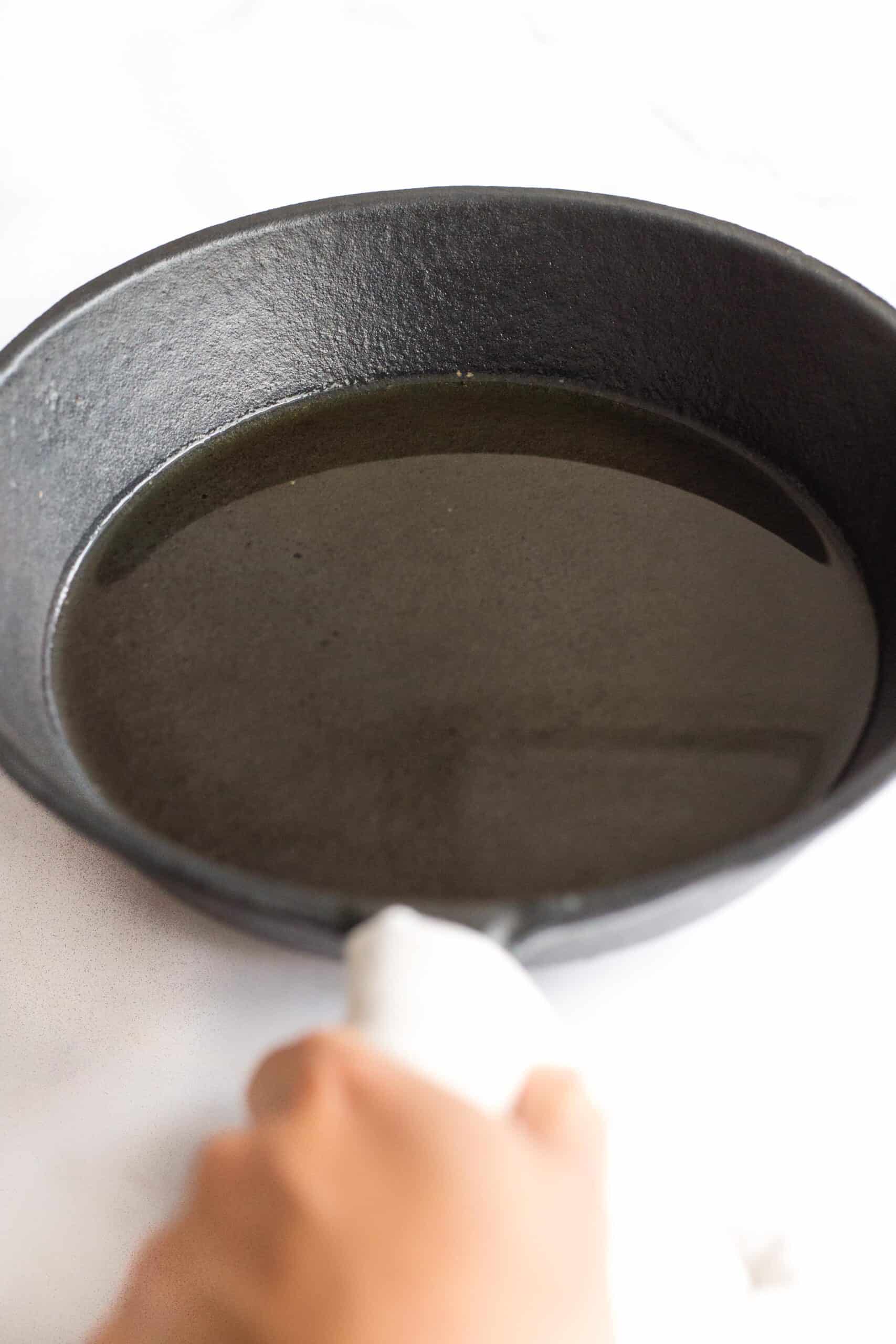
6. Transfer Batter to Skillet
Pour the chickpea batter quickly into the hot oil in the skillet and return skillet to the oven.
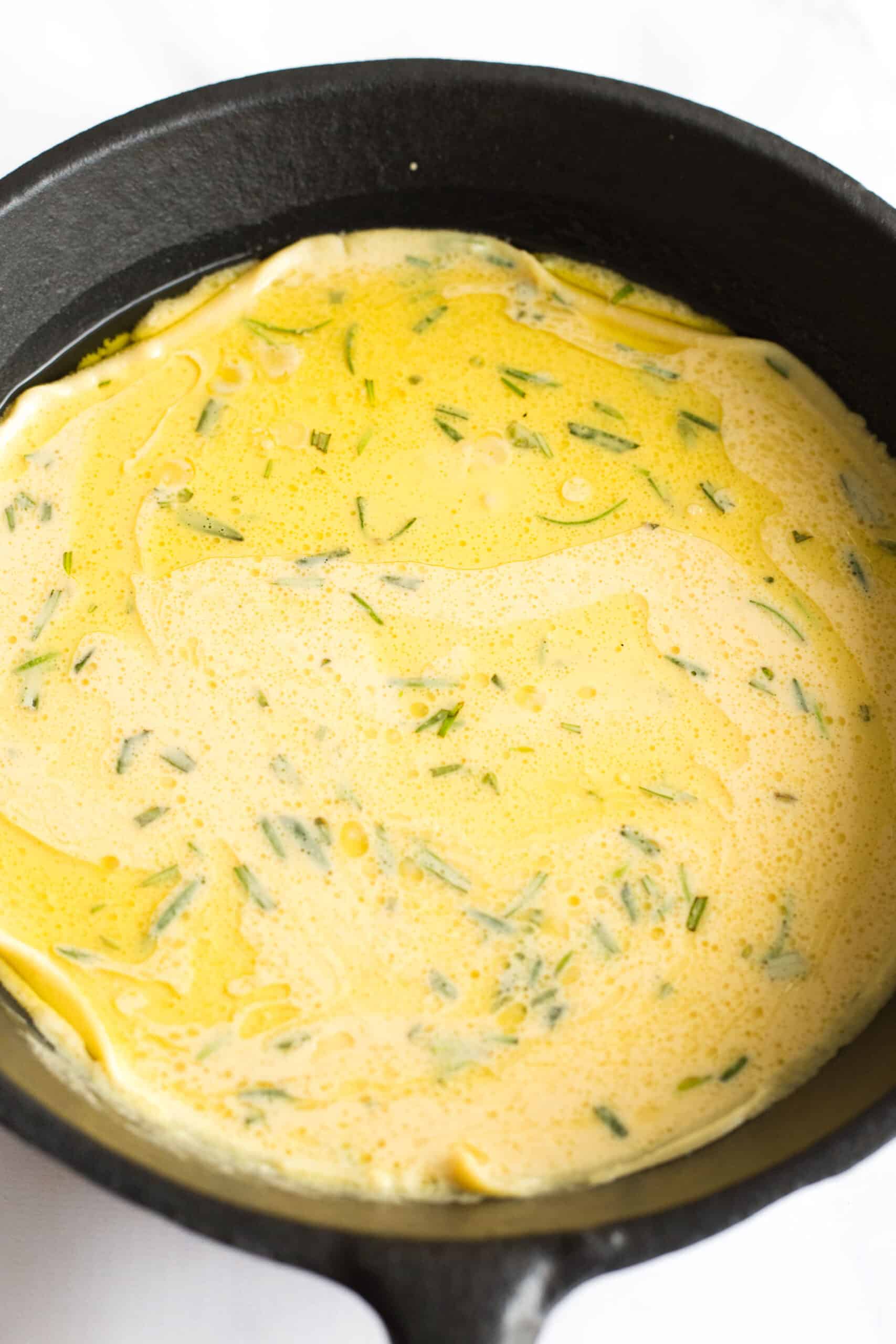
7. Bake Till Crispy
Bake the batter for approximately 30 to 35 minutes until it is golden brown and crispy on top.
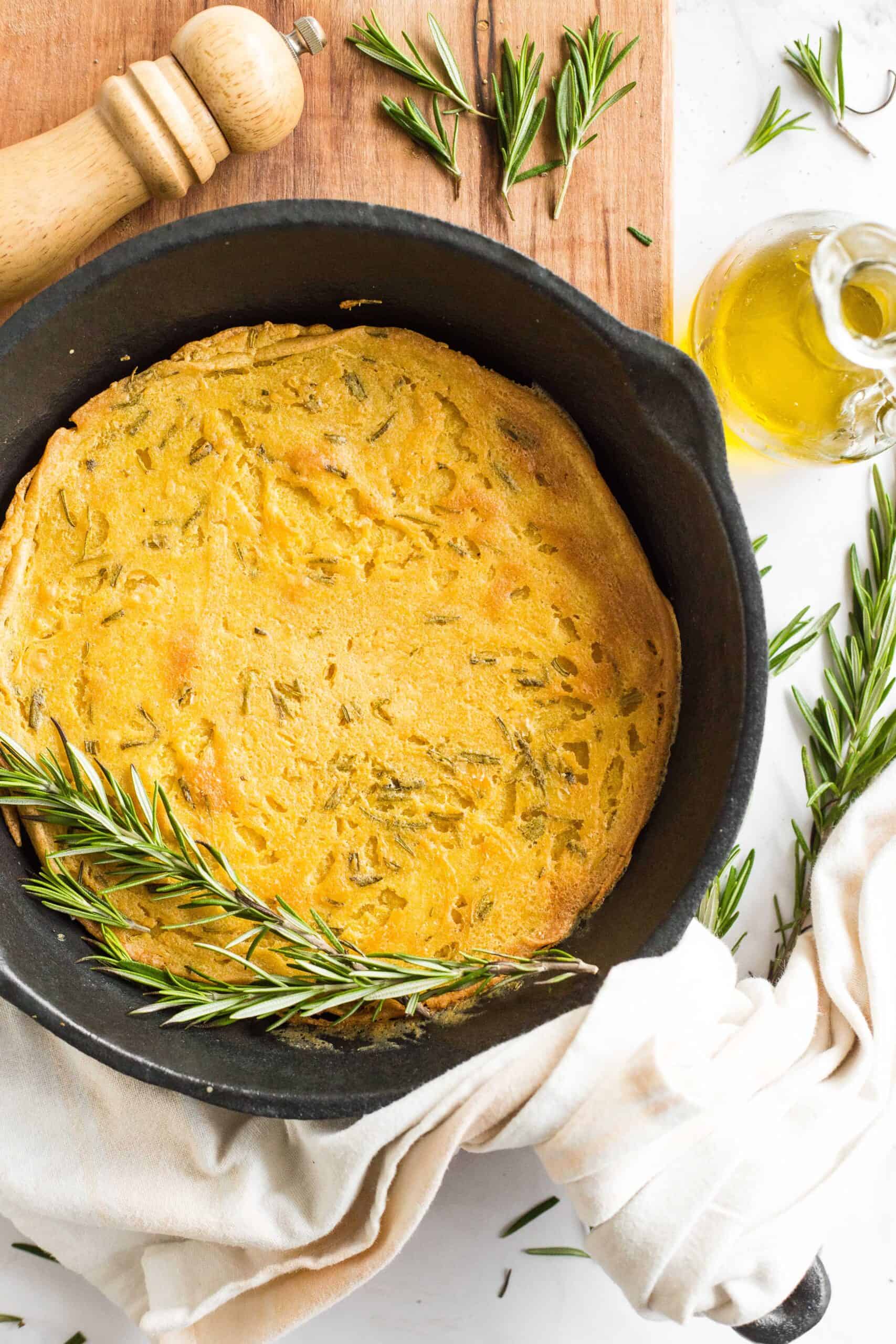
8. Cut into Wedges and Enjoy
Cut the farinata into wedges and serve hot!
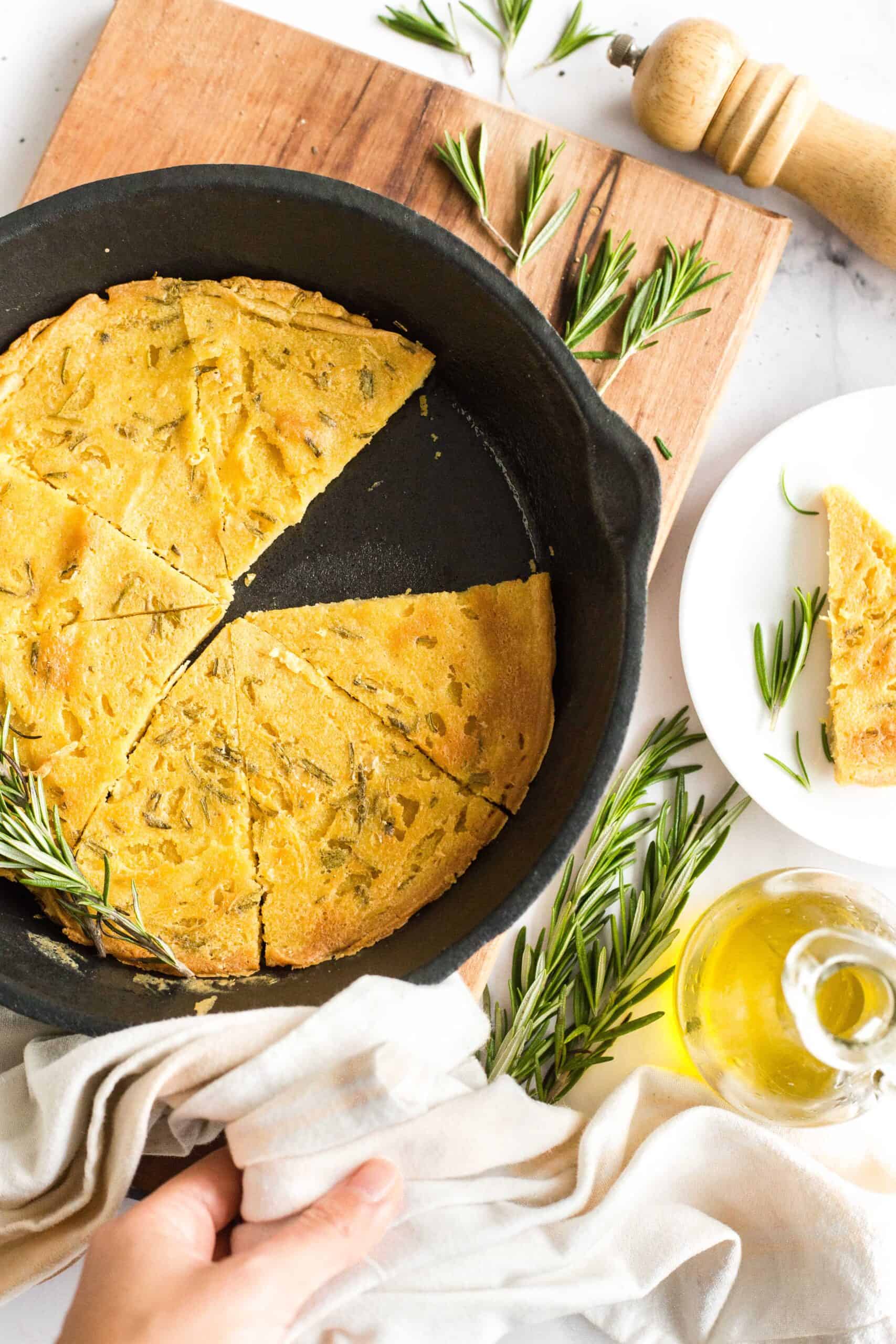
Dish by Dish Tips/Tricks:
- Bake Until Crispy: In my opinion, farinata is best eaten crispy and hot. If the necessary, bake for as long as needed until crusty for the best results.
- Thinner is Better: Depending on the size of your cast iron skillet/baking sheet, the farinata may turn out flatter or thicker. I personally like it best as thin as possible, so if you’re using a smaller cast iron skillet, you may want to reduce the recipe proportionally.
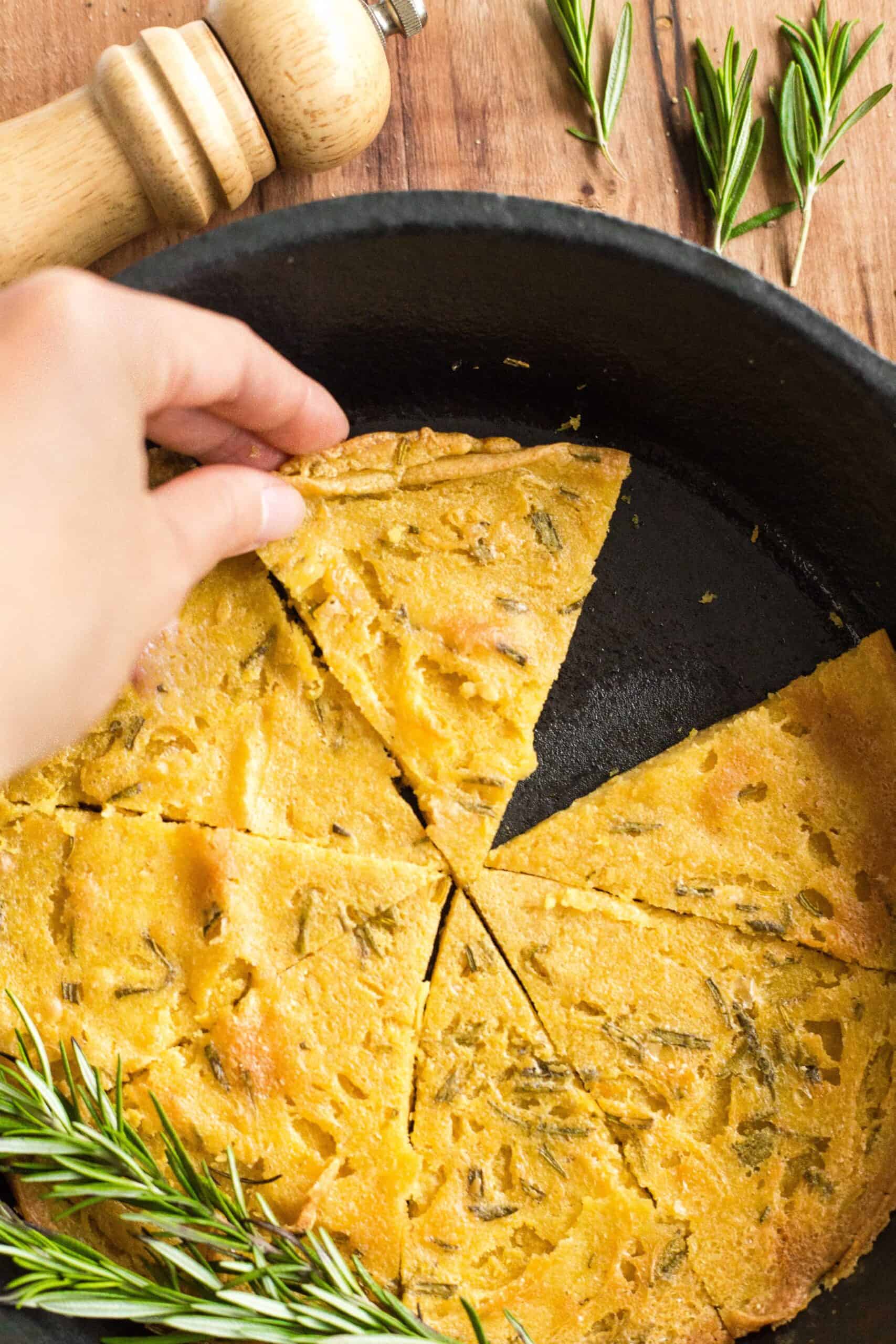
Recipe FAQs:
To store, place the farinata in an airtight container and store it in the refrigerator for up to 1 week. Reheat it in the oven at 400F for 5 minutes before eating.
Yes, you can freeze this farinata. To freeze, place the farinata in a freezer-safe container or ziplock bag and freeze for up to 3 months. Reheat in the oven at 400F for 10 – 15 minutes before eating.
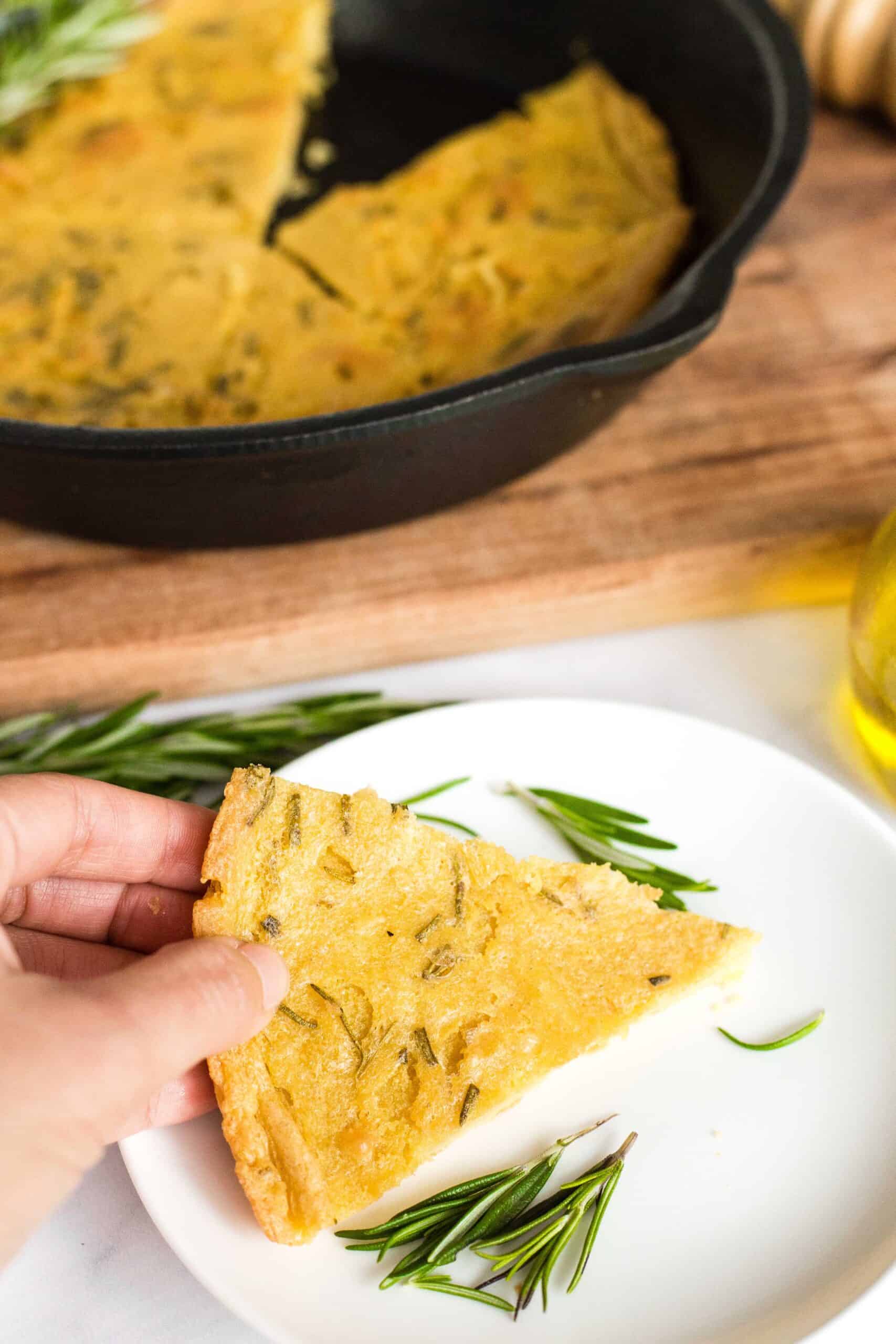
Other Italian Recipes You’ll Enjoy:
- Easy Homemade Grissini (Italian Breadsticks)
- Roasted Artichokes
- Easy Pumpkin Gnocchi (Gluten-Free)
- Creamy Pumpkin Risotti (Gluten-Free)
Chickpea Recipes You’ll Love:
- Crispy Air Fryer Chickpeas (Gluten-Free, Vegan)
- Chickpea Flour Chocolate Chunk Cookies (Gluten-Free, Vegan)
- Easy Chickpea Curry (Gluten-Free, Vegan)
Appetizer Recipes to Indulge In:
P.S. If you try this recipe, I’d love for you to leave a star rating below, and/or a review in the comment section further down the page. I always appreciate your feedback. Be sure to check out my entire Recipe Index for all the recipes on the blog. You can also follow me on Pinterest, Facebook or Instagram! Sign up for my Email List to get fresh recipes in your inbox each week!
Print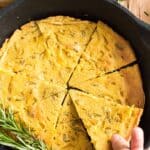
Easy Farinata Recipe – Chickpea Flatbread (Gluten-Free, Vegan)
- Total Time: 1 hour 5 minutes
- Yield: 4 servings 1x
- Diet: Gluten Free
Description
Crispy, golden brown and impossibly delicious, this easy farinata (also known as torta de ceci, cecina, faina or socca) is crazy easy to make, and is the perfect appetizer, snack or side dish. I know you’ll be making this chickpea flatbread on repeat, so keep the recipe handy! Naturally gluten-free, dairy-free, and vegan too, so everyone can indulge and enjoy!
Ingredients
- 1 cup chickpea flour
- 1 1/3 cup warm water
- 1 teaspoon salt
- 1 teaspoons minced fresh rosemary
- 5 tablespoons extra virgin olive oil, divided
- Freshly ground black pepper, to taste
Instructions
- Mix Flour, Salt and Water: Whisk chickpea flour, salt, and warm water together in a large bowl to get a pale yellow batter. Cover the bowl with plastic wrap or a plate and let the batter stand for 30 minutes.
- Remove Foam: Use a spoon to remove as much foam as possible from the batter.
- Add Oil and Rosemary: Once batter is done standing, whisk in 2 tablespoons of the olive oil and rosemary to get a liquid yellow mixture.
- Preheat Oven: While the batter is standing, preheat the oven to 500F and place a standard 10-inch cast iron skillet in the oven to heat it up until smoking hot.
- Heat Oil in Skillet: Pour the remaining 3 tablespoons of olive oil into the hot cast iron skillet and swirl the skillet to ensure oil coats the entire surface. Return the skillet with the oil to the oven until oil is hot and starts to shimmer.
- Transfer Batter to Skillet: Pour the chickpea batter quickly into the hot oil in the skillet and return skillet to the oven.
- Bake Till Crispy: Bake the batter for approximately 30 to 35 minutes until it is golden brown and crispy on top.
- Cut into Wedges and Enjoy: Cut the farinata into wedges and serve hot!
Notes
Chickpea Flour: Since this is a chickpea flatbread recipe, chickpea flour is the main ingredient, and I do NOT recommend replacing it with other flours.
Warm Water: Make sure to use warm water so the chickpea flour dissolves well.
Rosemary: I like adding fresh rosemary for adding flavor. If you only have dried rosemary, use 1/2 teaspoon dried rosemary as dried herbs tend to be stronger in taste than fresh herbs. Alternatively, if you don’t like the taste of rosemary, feel free to leave it out instead.
Olive Oil: In my opinion, the flavor that extra virgin olive oil imparts to this flatbread is the best. However, if you don’t have olive oil on hand, you may replace olive oil with other high-smoke point oils such as avocado oil.
Pepper: I like the heat that a sprinkle of freshly ground pepper adds to the chickpea flatbread. However, you may leave it out if you prefer.
Cast Iron Skillet: I highly recommending using a cast iron skillet to ensure that both the bottom and the top crisp up as the farinata cooks in the oven. If you don’t have a cast iron skillet, you may also use a rimmed baking sheet instead.
Storing/Freezing: To store, place the farinata in an airtight container and store it in the refrigerator for up to 1 week. Reheat it in the oven at 400F for 5 minutes before eating. To freeze, place the farinata in a freezer-safe container or ziplock bag and freeze for up to 3 months. Reheat in the oven at 400F for 10 – 15 minutes before eating.
This post was originally published in 2014, but has since been updated with better photographs, clearer step-by-step instructions, and better writing. The recipe was also modified slightly to make a thinner batter.
- Prep Time: 30 mins
- Cook Time: 35 mins
- Category: Bread
- Method: Baking
- Cuisine: Italian

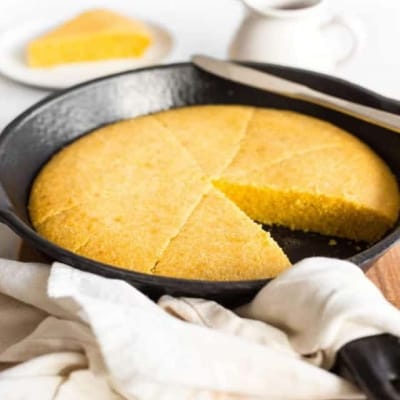

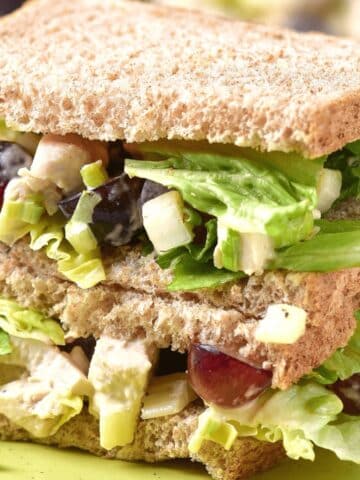
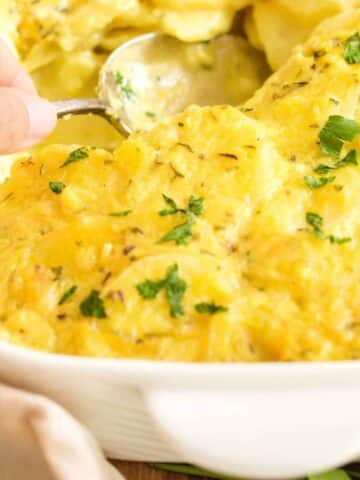
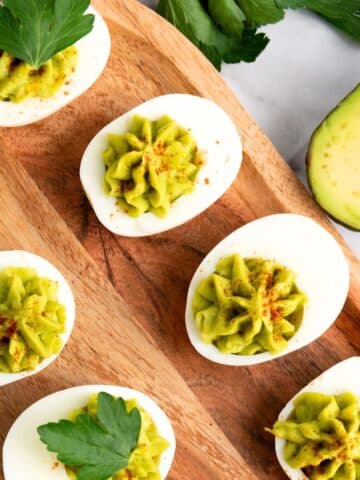

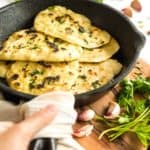
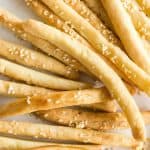
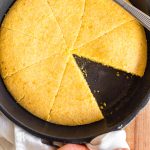


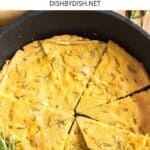
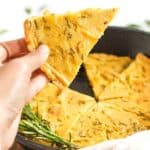


Good morning Felicia,
Hmm… I do not remember whether I have tried this chickpea flatbread or not before but since I do like eating boiled chickpea, I will try this out some time when I have chickpea available in my pantry.
Have a blessed day with lots of love from us here in SG,
Mum
Hi mummy, this recipe uses chickpea flour so if you have chickpea flour (or you can grind flour from dried chickpeas) you can make this 🙂
It looks delicious in your beautiful pictures. I agree about the particular taste (which I like very much..i too like it with salt and black pepper. I hope you have a great holiday, best Rx
Rachel! Thanks for dropping by! I am enjoying myself so much in Italy that I just want time to come to a standstill. Oh btw, I wanted to let you know that we went to Testaccio for dinner on Sunday night based on your advice, but because it was august and most shops were todo chiusi, we went to the first restaurant we stumbled upon (to Osteria delgi amici – and had a really good dinner. I had octopus salad, then oxtail stew. really good roman food. Have you tried this place?).
thanks for recommending testaccio! Hope you’re enjoying yourself in London! I’ll be heading back to Rome for one last night after Capri, and then it’s arrivederci la bella Italia!